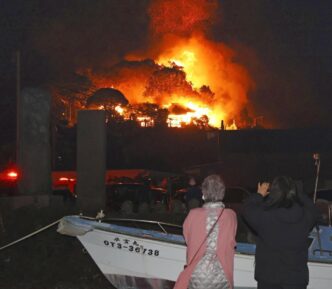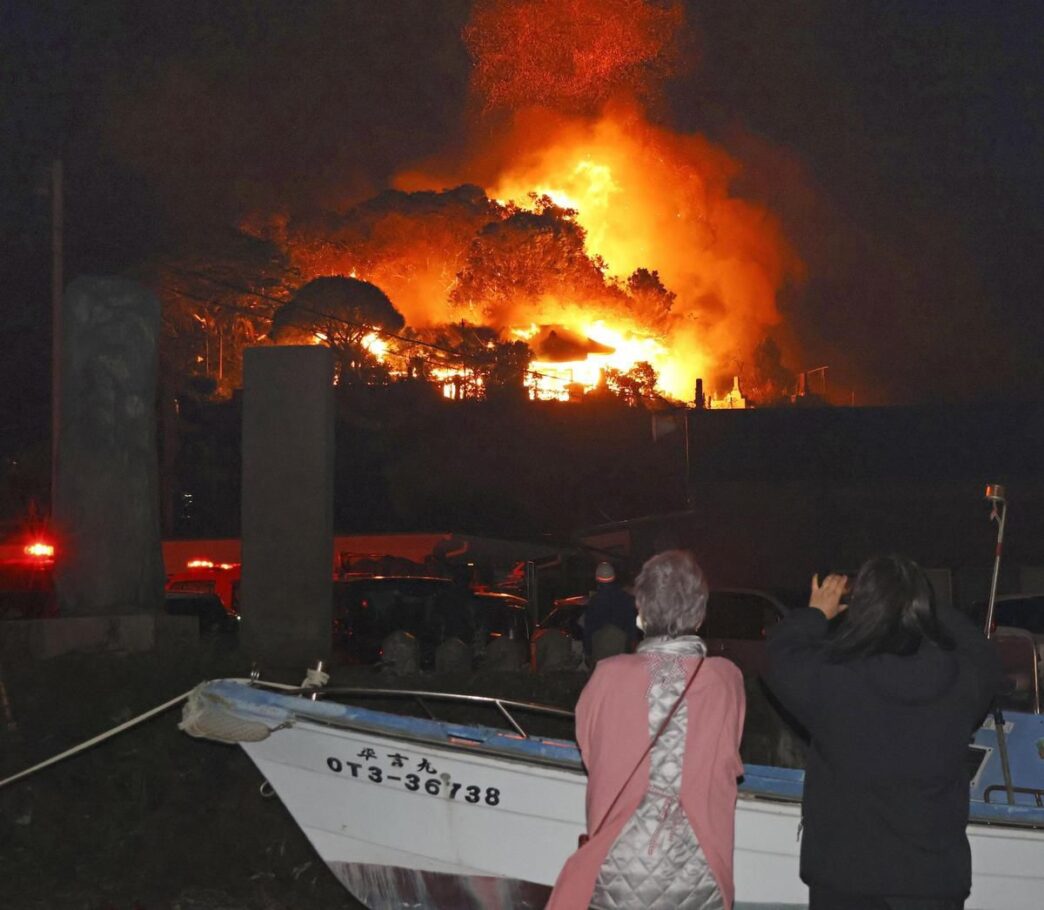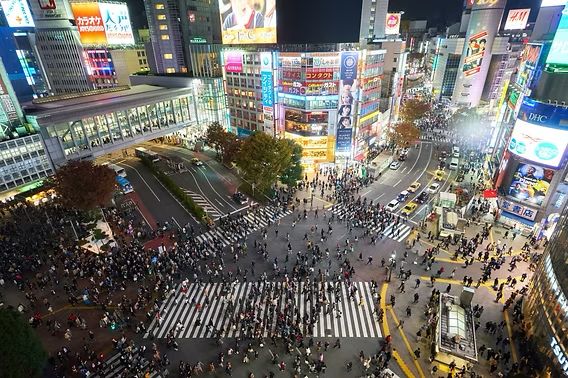A devastating fire tore through a coastal district in southern Japan, destroying more than 170 buildings, killing at least one person, and displacing scores of residents. The incident, which began on Tuesday evening, is being called the largest urban blaze in Japan in nearly 50 years, fueling widespread concern and a large-scale emergency response.
What Happened
- Location & Timing: The fire broke out on November 18, 2025, in the Saganoseki district of Ōita City, located on the island of Kyushu.
- Spread: Strong coastal winds contributed to rapid spread. Flames jumped from narrow streets of old wooden houses to nearby forested slopes and even reached an uninhabited island more than 1 km offshore.
- Area Burned: Approximately 48,900 square meters about the size of seven football fields were consumed by the blaze.
- Evacuations: Around 175 residents were forced to evacuate to shelters as the fire raged.
- Power Outage: Up to 300 homes were hit by power outages due to the fire’s impact.
Casualties
- Fatalities: One person has been confirmed dead.
- Injuries: A woman in her 50s sustained mild burn injuries.
- Missing: There was at least one person reported missing; local authorities found a body presumed to be that person.
Response
- Firefighting Efforts: Over 200 firefighters, along with military (Self-Defense Force) helicopters, were deployed to tackle the blaze.
- Government Support: Japanese Prime Minister Sanae Takaichi expressed her condolences and pledged “maximum possible support.”
- Investigation: The cause of the fire is still under investigation.
Why It’s So Significant
- This is Japan’s worst urban fire (excluding earthquake-induced fires) since a major blaze in Sakata in 1976.
- The scale of destruction both in number of buildings and ground area underscores how vulnerable older, densely packed neighborhoods can be, especially under strong winds and in areas with narrow roads.
- The fire’s reach into forested slopes and even to a nearby island highlights the speed and unpredictability with which wildfires can spread when aided by wind.
Human Impact
Residents described the fire spreading “in the blink of an eye,” with little time to grab belongings. Some recalled tiny alleyways and old, wooden structures making evacuation and firefighting especially difficult. The emotional toll is high families have lost homes, and a tight-knit fishing neighborhood now faces a long road to recovery.
What Comes Next
- Relief & Recovery: Local and national governments are coordinating to provide shelter, financial assistance, and rebuilding support.
- Investigation: Authorities are probing the cause of the fire whether it was accidental or due to structural vulnerabilities in the neighborhood.
- Prevention: In the wake of such a major blaze, there will likely be renewed calls for fire safety reforms, especially in older, high-risk urban areas with wooden housing and narrow streets.
This tragic event is a stark reminder of the destructive potential of urban fires, particularly in areas with traditional wooden architecture. Let me know if you want to dig into historical urban fires in Japan, or what lessons other cities can learn from this disaster.
Originally written by-THE BBC
Link to the article: https://www.bbc.com/news/videos/cx207dw3v5yo

















